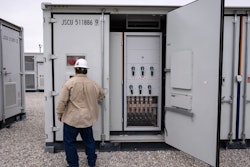
Workplaces are widely diverse – from large corporate headquarters and warehouses to dentists’ offices, school classrooms, and retail spaces. One thing most have in common, however, is the presence of lights in the ceiling. And, more and more, we are learning how aspects of that lighting can significantly impact employees’ levels of comfort, stress, motivation, and job satisfaction.
Since neither workers nor workplaces are one-size-fits-all, allowing facility managers and employees to control how much light they need for various tasks at various times is a fairly simple way to improve the work environment – and one reason why the DLC has focused on dimmability in the most recent version of our Solid-State Lighting Technical Requirements.
From an energy savings perspective, the importance of dimmable lighting is clear: the more an LED is dimmed, the less electricity it uses. Drilling further into this, research has shown that, while combining non-dimmable LED products with occupancy sensors increases energy savings by 24 percent beyond what’s possible with the LEDs alone, those savings expand considerably – 47 percent on average - when dimmable LED products are used with networked lighting controls (NLCs) that include occupancy sensors, daylight dimming, task tuning, and other capabilities.
But impressive energy savings are only part of this equation – and possibly a less important one for some companies. The “3-30-300 rule” holds that for every $3 per square foot businesses spend on energy, they now $30 on real estate costs and $300 on employee salaries and benefits. So, it’s easy to understand why companies may be less interested in a technology’s energy savings potential than in its capacity to boost employee satisfaction, comfort, and well-being. Consider, for example, the value of dimming for a teacher seeking lower light levels to calm young children, for an office worker seated by a large window with plenty of natural light, or a medical professional desiring different light levels depending on the age and condition of her patients.
A white paper published by the Lighting Controls Association notes that “A number of studies demonstrate that personal dimming can result in higher productivity – specifically in the metrics of vigilance, motivation and satisfaction – and also in energy savings. This dual impact can result in an improved bottom line and more satisfied employees and tenants.”
Research on the topic includes a survey of office workers showing that three quarters of them desired more control over their lighting, with half wanting dimming control and a majority stating that improved lighting would improve their mood and efficiency. Meanwhile, another investigation showed that nearly 60 percent of office workers studied placed a “high” or “very high” value on being able to dim their lighting. And a “Lighting Quality and Field Simulation Study” revealed that people who had dimming control reported higher ratings of lighting quality and overall satisfaction with their work environment, and higher self-rated productivity.
The DLC’s new Solid-State Lighting Technical Requirements V5.0/V5.1 are designed to move the LED market in a more controls-focused direction, starting with new dimming requirements for most indoor luminaires and retrofit kits, as well as for all DLC Premium products, under V5.0. Since LEDs installed now may remain in place for a decade or more, strengthening controllability requirements such as dimming at the time of installation enables potential energy and cost savings for years to come. In addition, as we seek to maximize the energy saving potential of networked lighting controls, it’s important to note that non-dimmable products aren’t able to leverage the full functionality of NLCs.
The second phase of the policy, V5.1 (which opens for new Qualified Product List [QPL] applications on July 1), establishes dimming requirements for nearly all DLC-listed products, including replacement lamps and exterior luminaires.
These requirements come amid recent technology advances and market shifts. Seventy-five percent of non-lamp LED products on the QPL are already dimmable and all LEDs are inherently able to dim. Notwithstanding the need to ensure dimming is enabled during retrofits (through careful consideration of the lighting control and fixture), this technology is ready now. It is critical for the market to move with the technology, not be encumbered by the limitations of legacy technologies (such as fluorescent tube lighting that isn’t easily dimmable).
We’re confident our phased approach to implementing these changes will prove both expeditious and realistic in moving the market toward broader adoption of dimmable LEDs and other lighting solutions that save money and benefit people and the environment.
Christina Halfpenny is Executive Director and CEO of the DesignLights Consortium.























